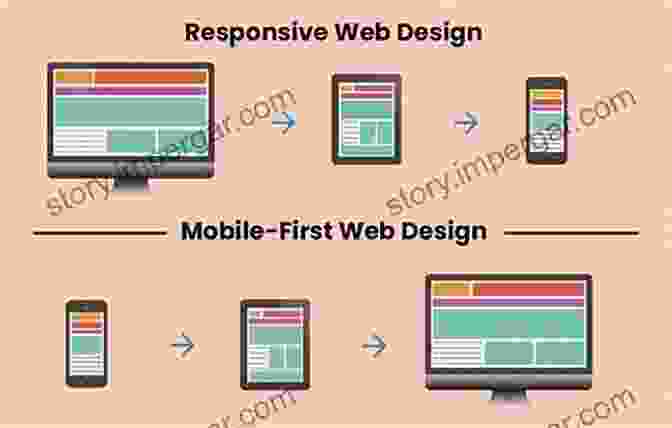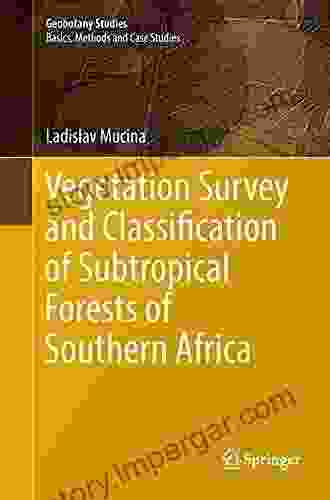Unveiling the Secrets of Responsive Design for Heritage Sites: A Comprehensive Guide

In the ever-evolving digital landscape, responsive design has emerged as a cornerstone of effective web design. This innovative approach ensures that websites seamlessly adapt to a wide range of devices, from smartphones to desktops, providing a user experience that is both accessible and engaging. For heritage sites, the implementation of responsive design holds immense potential to enhance the accessibility and preservation of cultural heritage.
4 out of 5
| Language | : | English |
| File size | : | 13887 KB |
| Text-to-Speech | : | Enabled |
| Screen Reader | : | Supported |
| Enhanced typesetting | : | Enabled |
| Print length | : | 288 pages |
Understanding Responsive Design

Responsive design is a web design technique that utilizes flexible layouts, fluid images, and cascading style sheets (CSS) to ensure that a website's content and visual presentation adapt to the size and orientation of the viewing device. This approach eliminates the need for separate websites for different devices, providing a consistent and optimized experience for all users.
Benefits of Responsive Design for Heritage Sites
- Increased Accessibility: Responsive design enables heritage sites to reach a wider audience by ensuring that their websites are accessible to users with various devices, including smartphones, tablets, and laptops.
- Improved User Experience: By adapting to the screen size of the user's device, responsive design provides an optimal viewing experience, making it easier for users to navigate and interact with the site.
- Enhanced Preservation: Responsive design plays a vital role in preserving cultural heritage by ensuring that digital content is accessible and usable by future generations, regardless of technological advancements.
- Lower Maintenance Costs: Responsive design eliminates the need for multiple websites, resulting in reduced maintenance and management costs for heritage sites.
li>Increased Engagement: A well-designed responsive website can captivate users, encouraging them to explore and learn more about the heritage site.
Practical Implementation of Responsive Design in the Heritage Environment
Implementing responsive design for heritage sites involves several key considerations:
- Use flexible layouts: Employ layouts that automatically adjust to different screen sizes, ensuring that content is presented in an optimal manner.
- Utilize fluid images: Configure images to scale proportionally to the device's screen size, maintaining visual integrity across devices.
- Employ CSS media queries: Utilize CSS media queries to target specific screen sizes and apply appropriate styles for each device.
- Test on multiple devices: Thoroughly test the website across various devices to ensure consistent performance and user experience.
- Consider accessibility: Implement accessibility features to ensure that the website is accessible to users with disabilities.
Case Studies of Responsive Design in the Heritage Sector
Numerous heritage sites worldwide have successfully implemented responsive design to enhance their online presence. Some notable examples include:
- The British Museum: The museum's website seamlessly adapts to different devices, providing an immersive experience for exploring its vast collection.
- The Smithsonian Institution: The Smithsonian's website offers a comprehensive and responsive platform for showcasing its diverse collections and exhibitions.
- The Rijksmuseum: The Rijksmuseum's website combines responsive design with high-resolution images to provide an engaging and interactive experience for art enthusiasts.
In the digital age, responsive design has become an indispensable tool for heritage sites to connect with audiences and preserve their cultural heritage for future generations. By embracing the principles of responsive design, heritage sites can create accessible, engaging, and sustainable online experiences that enrich the lives of visitors and learners worldwide.
4 out of 5
| Language | : | English |
| File size | : | 13887 KB |
| Text-to-Speech | : | Enabled |
| Screen Reader | : | Supported |
| Enhanced typesetting | : | Enabled |
| Print length | : | 288 pages |
Do you want to contribute by writing guest posts on this blog?
Please contact us and send us a resume of previous articles that you have written.
 Book
Book Novel
Novel Page
Page Chapter
Chapter Text
Text Story
Story Genre
Genre Reader
Reader Library
Library Paperback
Paperback E-book
E-book Magazine
Magazine Newspaper
Newspaper Paragraph
Paragraph Sentence
Sentence Bookmark
Bookmark Shelf
Shelf Glossary
Glossary Bibliography
Bibliography Foreword
Foreword Preface
Preface Synopsis
Synopsis Annotation
Annotation Footnote
Footnote Manuscript
Manuscript Scroll
Scroll Codex
Codex Tome
Tome Bestseller
Bestseller Classics
Classics Library card
Library card Narrative
Narrative Biography
Biography Autobiography
Autobiography Memoir
Memoir Reference
Reference Encyclopedia
Encyclopedia Mary Beth Norton
Mary Beth Norton Paul Den Arend
Paul Den Arend Marvin D Iannone
Marvin D Iannone Mani Karnika
Mani Karnika Mark A Hall
Mark A Hall Tony Hiss
Tony Hiss Ross Barrett
Ross Barrett Mattheus F A Goosen
Mattheus F A Goosen Martin Meadows
Martin Meadows Ronald Syme
Ronald Syme R J Windham
R J Windham Roger Williams
Roger Williams Nick Baras
Nick Baras W E Vine
W E Vine Margaret Alice Murray
Margaret Alice Murray Mary E Jones Parrish
Mary E Jones Parrish Robert Teigrob
Robert Teigrob Maurizio Bevilacqua
Maurizio Bevilacqua Robert Frederick Opie
Robert Frederick Opie Matthew Hutson
Matthew Hutson
Light bulbAdvertise smarter! Our strategic ad space ensures maximum exposure. Reserve your spot today!

 Langston HughesEmbryology at a Glance: A Comprehensive Guide for Students and Professionals
Langston HughesEmbryology at a Glance: A Comprehensive Guide for Students and Professionals Stephen FosterFollow ·17.7k
Stephen FosterFollow ·17.7k Glen PowellFollow ·7.2k
Glen PowellFollow ·7.2k Darrell PowellFollow ·13k
Darrell PowellFollow ·13k Ben HayesFollow ·12.6k
Ben HayesFollow ·12.6k John ParkerFollow ·15.9k
John ParkerFollow ·15.9k J.R.R. TolkienFollow ·19.5k
J.R.R. TolkienFollow ·19.5k Cason CoxFollow ·12.7k
Cason CoxFollow ·12.7k Roberto BolañoFollow ·17.8k
Roberto BolañoFollow ·17.8k

 Roberto Bolaño
Roberto BolañoUnveiling the Beauty and History of the Medici Iris: A...
In the realm of...

 Theodore Mitchell
Theodore MitchellImproving Gut Health in Poultry: Unlocking the Path to...
In the ever-evolving field of...

 Victor Hugo
Victor HugoPersonalized Medicine with a Nanochemistry Twist:...
The future of healthcare...

 George Martin
George MartinA Year Of Wine: Perfect Pairings Great Buys And What To...
## Year of Wine: An Epic Journey Through the...

 Tom Hayes
Tom HayesDelve into the Enigmatic World of Southern Africa's...
Embark on a captivating journey through the...
4 out of 5
| Language | : | English |
| File size | : | 13887 KB |
| Text-to-Speech | : | Enabled |
| Screen Reader | : | Supported |
| Enhanced typesetting | : | Enabled |
| Print length | : | 288 pages |











